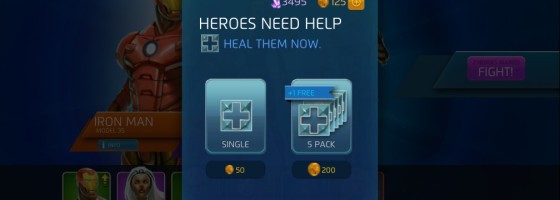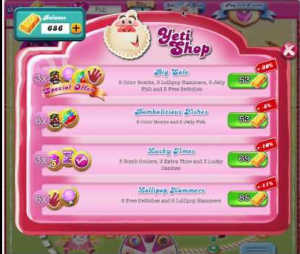Recently, I talked about loot box monetization design and how it has replaced pay or wait mechanics as the popular F2P option. For the sake of completion, I want to talk more about pay or wait and why it was never a good idea from the start.
Stop and Go:
Pay or wait game design was a popular monetization option of early F2P and social games. Similar to loot box design, the goal is to get the player to pay a small amount of money multiple times instead of one big purchase.
Pay or wait is built around an “energy” system, and energy can mean different things. Every time the player performs actions that are about progression, they will lose energy. When the player is out of energy, they must either wait a specific time to recharge or spend money now.
A variant of this would be games that are designed around timers. All the actions in the game are free, but there is a cooldown before you can do something. In this case, the player is spending a small amount of money to cut the timer short.
The use of pay or wait serves two purposes. The first is the monetization side and getting people to spend money. As we’ve talked about, players will either value time or money when it comes to microtransactions. Pay or wait is the most explicit way of dividing up value. People who value time more will get around pay or wait mechanics by spending money immediately. For those who value money, they’ll be more likely to stop playing when they run out of energy and come back again.
The second use is that it creates a stopping point that prevents players from rushing through content. Most mobile/F2P games of this kind are very basic in terms of mechanics. This affords the developer to easily expand the content by making minute changes.
By having the pay or wait wall, it prevents the players from seeing all the content in one sitting; making it less likely they’ll burn out on it.
The use of pay or wait systems goes back to the values of “time” and “money” for the consumer. If someone values time more, then they’re going to spend money to reduce the timers. If they don’t have money to use, then the person will put up with the timers.
Pay or wait was the main mechanic behind a lot of popular (and no so popular) F2P games, but its use has dwindled in light of loot box design.
Taking Control:
The problem with pay or wait is that deep down it serves no functionality to the consumer; only for profit. For core gamers, no one wants to be told when they can or can’t play their game. Energy mechanics are akin to carrying water in a leaky bucket: You’re always going to have to put more into it. You can argue that they stop people from playing too long, but that’s really a secondary point behind earning money.
When we talked about scaling, energy mechanics are one of the most intrusive in terms of getting worse over time. At the start, you’ll be able to get done most of your tasks within the constraints, but eventually that will change. The goal is to wait until the person is hooked before the pay or wait mechanics reach their apex. Because there is a fixed amount of energy you can have at one time, this allows the developer to “charge” more to complete later challenges.
This provides another perfect way of scaling content to prolong gameplay; akin to raising the power curve of pay to win items.
The reason why loot boxes are popular now is the fact that they provide the player with something of value. Energy mechanics are just a money pit that gets worse over time.
The Loot Transition:
There’s not much else to say about energy mechanics, because they have been mostly dropped. The most popular F2P games have moved on to loot box design or were built that way from the start. Even though loot boxes have their own problems, they’re the lesser of two evils compared to pay or wait.
As we’ve talked about, it will be interesting to see if loot boxes will stay the new F2P darling, or will something else take its place.




